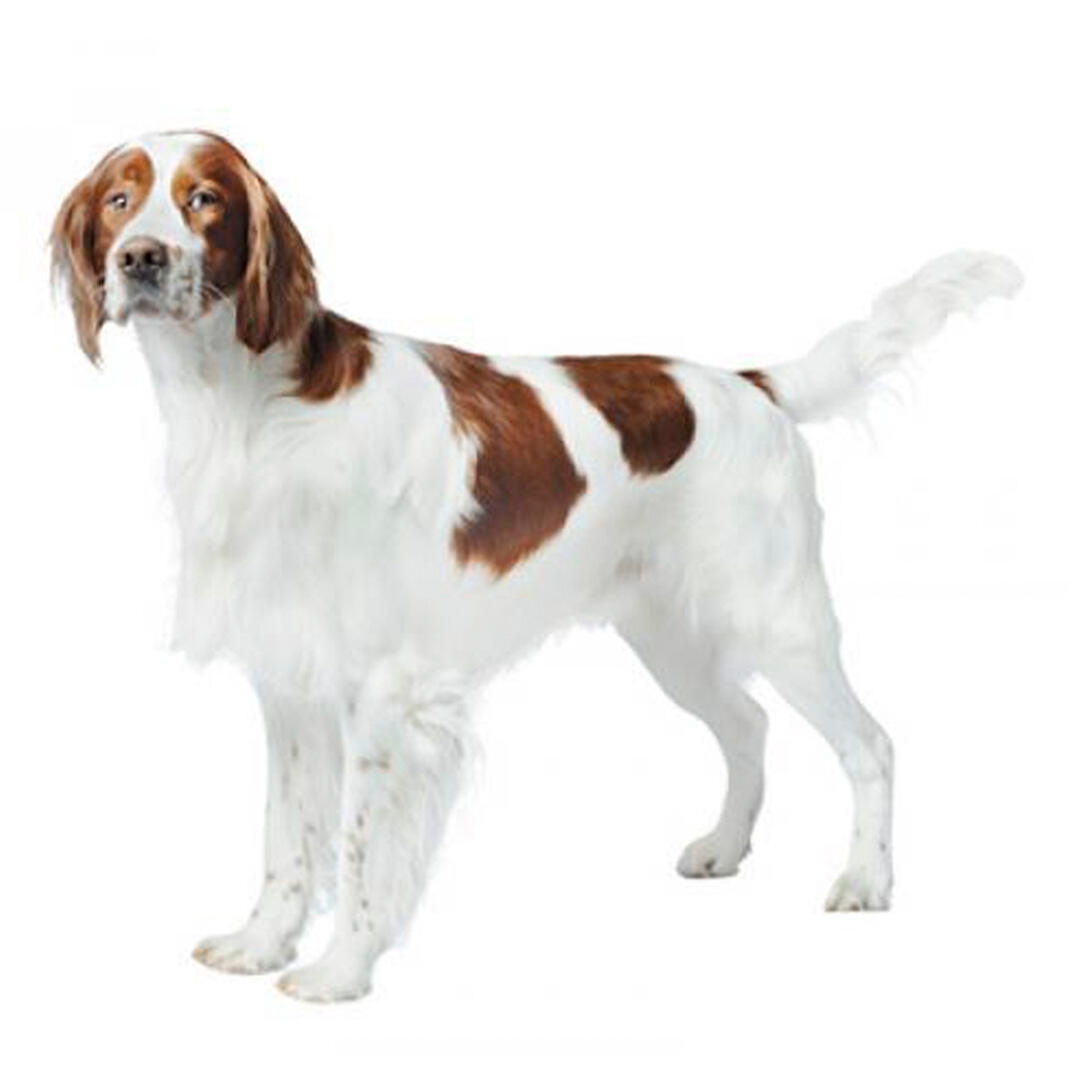
| Family-friendly: | 4/5 |
| Exercise needs: | 5/5 |
| Easy to train: | 4/5 |
| Tolerates being alone: | 1/5 |
| Likes other pets: | 4/5 |
| Energy level: | 5/5 |
| Grooming needs: | 2/5 |
| Shedding: | 3/5 |
As with many breeds, the Irish Red and White Setter can suffer from:
- Hip dysplasia
- Gastric dilatation volvulus
- Canine leucocyte adhesion deficiency which is an inherited disorder where the immune system does not work properly.
- Von Willebrand's disease which is where a dog produces insufficient or faulty clotting factors which can result in uncontrolled bleeding.
- Hereditary cataracts which is a condition where the lens in the eye becomes cloudy and this can result in blindness.
Priority Kennel Club health schemes and testing:
- Eye screening scheme
- DNA testing for canine leucocyte adhesion deficiency and von Willebrand's disease which test whether or not a dog has the potential to be affected by these conditions.
Gentle, biddable and good natured, the Irish Red and White Setter is an affectionate companion with a happy nature. Energetic and enthusiastic, they still make both good family and working dogs, and as such, require an active owner interested in training and long walks to give them the life they need.
| Family-friendly: | 4/5 |
| Exercise needs: | 5/5 |
| Easy to train: | 4/5 |
| Tolerates being alone: | 1/5 |
| Likes other pets: | 4/5 |
| Energy level: | 5/5 |
| Grooming needs: | 2/5 |
| Shedding: | 3/5 |
The Irish Red and White Setter can be traced back to the 18th century, though it’s possible they existed long before this, as red and white hunting dogs are described in texts as early as the 1500’s.
In common with many sporting dogs, they were popular with the landed gentry and indeed the Irish Red and White was preferred for its colour over the solid red Irish Setter, as it was felt there was less risk of accidentally shooting the brightly marked dog when it was crouching in long grass. This has long been a reason for preferring white or parti-coloured dogs with large white markings in the hunting field.
Originally bred to work with falcons, the Irish Red and White Setters function was to lie down upon spotting game, so hunters could throw nets over the crouching birds. When firearms were introduced to bird hunting, the Irish Red and White transitioned easily into a gundog.
With the advent of dog showing however, the glamorous Irish Setter with their longer coat and slightly taller, racier build, overtook the Irish Red and White in popularity. So much so, the breed nearly died out towards the end of the 19th century. Fortunately, enough survived after the First World War that dedicated breeders could save the breed and while they are still less popular than their red cousins, they have many devoted followers.
For those who love gundogs and in particular setters, but want a smaller setter, the Irish Red and White may be for you. You’ll need to have gundog experience, love long walks, love washing mud out of the white bits and not mind endless questions as to whether your dog is a spaniel crossed with a setter. A sense of humour is required! Suitable for rural homes with older children or child-free owners who have plenty of time.
Two hours or more hours of exercise per day will be needed, to include free running off lead, sniffing and exploring. A variety of walking routes will help keep the Irish Red and White Setter entertained, and some time should be spent on training and games to fulfil their need for mental stimulation.
Although not a particularly large dog, the Irish Red and White Setter will appreciate a decent sized home with room to train, play and groom indoors, and a sizeable secure garden outside. Better suited to the spacious rural suburbs or country home, the Irish Red and White needs access to a variety of walks and secure open space to run and quarter.
Large breed dogs, as well as having large appetites, benefit from a different balance of nutrients including minerals and vitamins compared to smaller-breed dogs.
Brushing and combing the coat a couple of times a week is recommended, paying particular attention to the feathering (longer hair on the tail, backs of the legs, chest and tummy) which will tangle if neglected.
The Irish Red and White Setter, in common with all the setters, requires a sensitive hand when training. Positive training methods will yield the best results, ensuring a happy dog who is motivated and keen to work with their owner.
While easily distracted and sometimes with a short attention span for training, they are capable of a range of doggy activities. The Irish Red and White will be willing to have a go at whatever their owner wants to do, though will obviously excel at jobs that involve gundog skills and so finding a pet gundog class may be ideal for focusing on a good mix of obedience training and inherited skills.
For the outdoor family with older children who will enjoy walks and training, the Irish Red and White Setter can make an excellent companion. As Setters are typically a sensitive type, they may not suit homes busy with very small children, particularly young, rambunctious setters who need a lot of time dedicated towards socialisation and training. With older or sensible children, they can be devoted family dogs.
While many dogs are traditionally thought of as being good with children, all dogs and children need to be taught to get on with and respect each other, and be safe together. Even so, dogs and young children should never be left alone together and adults should supervise all interactions between them.